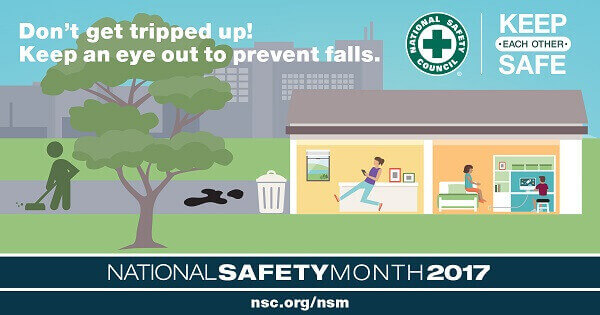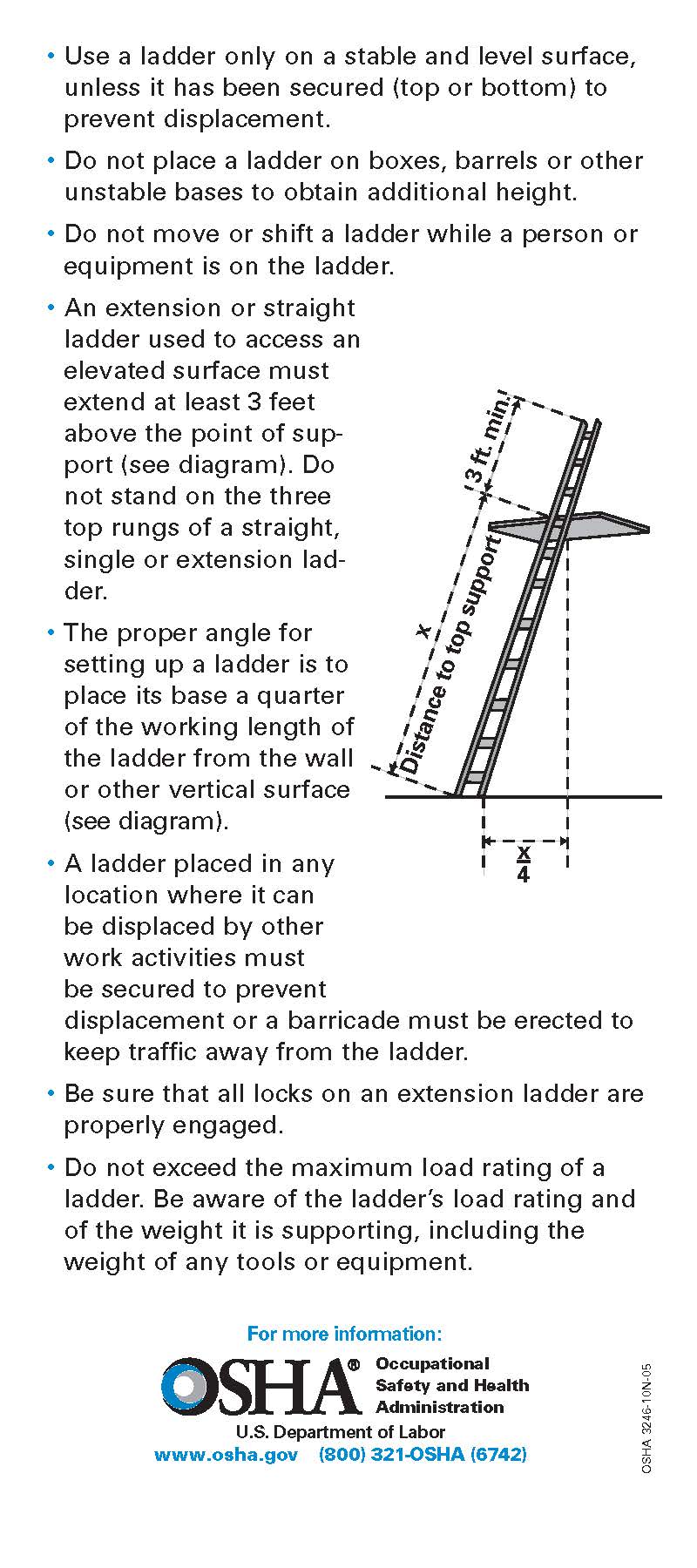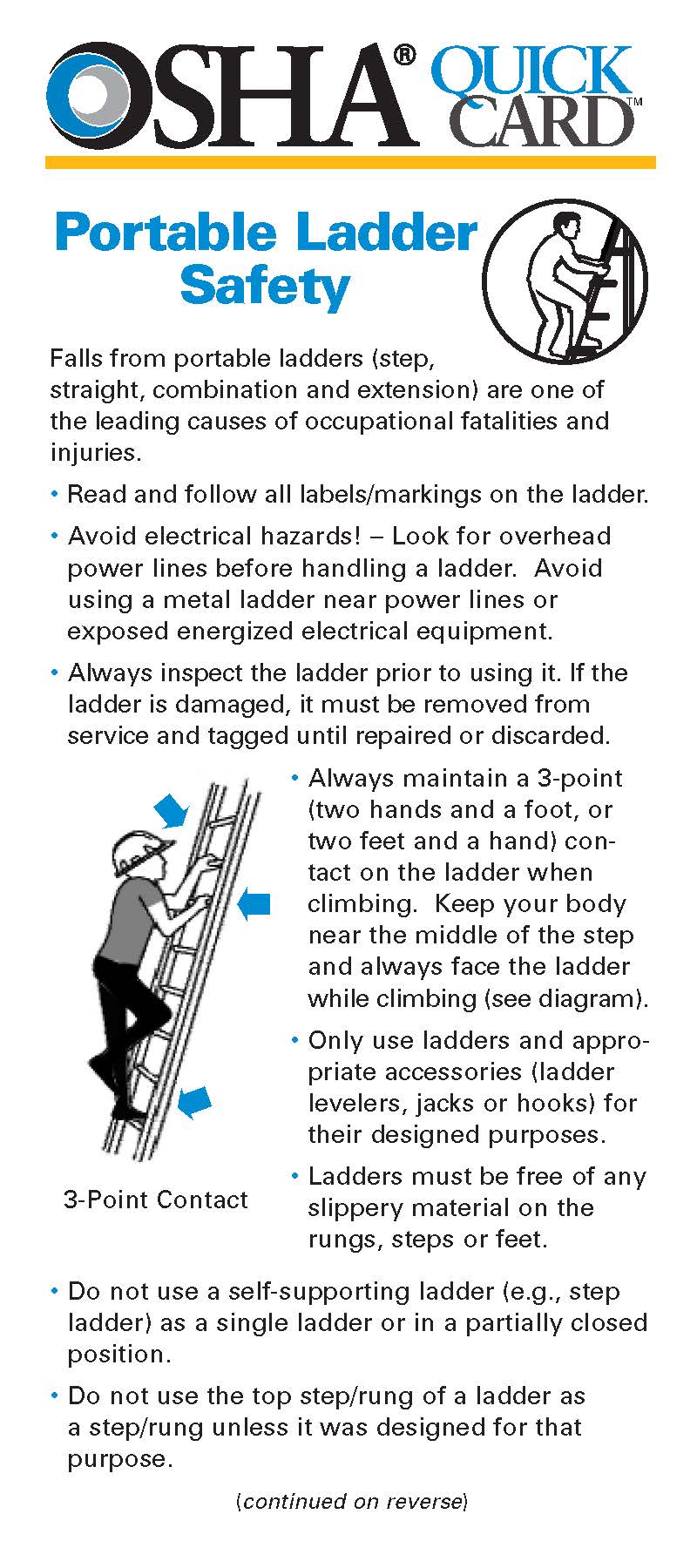June is National Safety Month – Week 1: Stand Up to Falls

Did you know that June is National Safety Month? Observed annually, National Safety Month focuses on reducing leading causes of injury and death at work, on the road and in our homes and communities.
The National Safety Council focuses on different, but equally important, topics each week. The first week’s topic is “Stand Up to Falls,” to bring awareness to fall protection.
Why is fall protection important?
Falls are among the most common causes of serious work-related injuries and deaths. Employers must set up the work place to prevent employees from falling off overhead platforms, elevated work stations or into holes in the floor and walls.
Prevent slips, trips and falls
Falls, slips, and trips accounted for 27 percent (309,060 cases) of the total occupational injuries and illnesses in 2015, according to data from the Bureau of Labor Statistics.

To help prevent slip, trip and fall incidents, the Canadian Center for Occupational Health and Safety (CCOHS) recommends the following:
- Report and clean up spills and leaks.
- Keep aisles and exits clear of items.
- Consider installing mirrors and warning signs to help with blind spots.
- Replace worn, ripped or damage flooring.
- Consider installing anti-slip flooring in areas that can’t always be cleaned.
- Use drip pans and guards.

Ladder-related Incidents
Ladder-related incidents led to more than 150 worker fatalities and more than 20,000 nonfatal injuries in 2015, according to Bureau of Labor Statistics data. Ladders have ranked seventh on OSHA’s annual “Top 10” list of most cited violations for the past two years.
American Ladder Institute (ALI) believes ladder injuries are preventable with proper training and product innovations, and is calling on safety professionals to help achieve six goals:
- Decrease the number of ladder-Ladder-related Incidents Related injuries and fatalities.Increase the number of ladder safety training certificates issued by ALI.
- Increase the frequency of ladder safety training modules viewed at www.laddersafetytraining.org
- Lower the ranking of ladder-related safety citations on OSHA’s annual “Top 10” list.
- Increase the number of training sessions for competent ladder inspectors.
- Increase the number of individuals and companies that inspect and properly dispose of old, damaged or obsolete ladders.
Slips and ladder-related incidents are just two of the many dangerous ways workers’ can fall, causing severe injury or death. For additional resources on Fall Protection visit here.
What can be done to reduce falls?
Employers must set up the work place to prevent employees from falling off overhead platforms, elevated work stations or into holes in the floor and walls. OSHA requires that fall protection be provided at elevations of four feet in general industry workplaces, five feet in shipyards, six feet in the construction industry and eight feet in long shoring operations. In addition, OSHA requires that fall protection be provided when working over dangerous equipment and machinery, regardless of the fall distance.
To prevent employees from being injured from falls, employers must:
- Guard every floor hole into which a worker can accidentally walk (using a railing and toe-board or a floor hole cover).
- Provide a guardrail and toe-board around every elevated open sided platform, floor or runway.
- Regardless of height, if a worker can fall into or onto dangerous machines or equipment (such as a vat of acid or a conveyor belt) employers must provide guardrails and toe-boards to prevent workers from falling and getting injured.
- Other means of fall protection that may be required on certain jobs include safety harness and line, safety nets, stair railings and hand rails.
OSHA requires employers to:
- Provide working conditions that are free of known dangers.
- Keep floors in work areas in a clean and, so far as possible, a dry condition.
- Select and provide required personal protective equipment at no cost to workers.
- Train workers about job hazards in a language that they can understand.
Safety is everyone’s responsibility, and you can show your commitment by taking our SafeAtWork pledge here!

